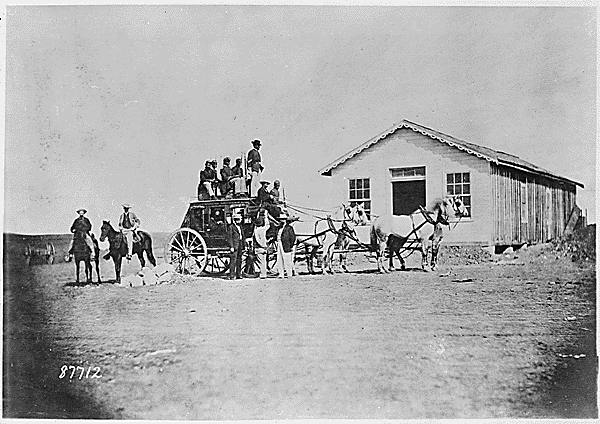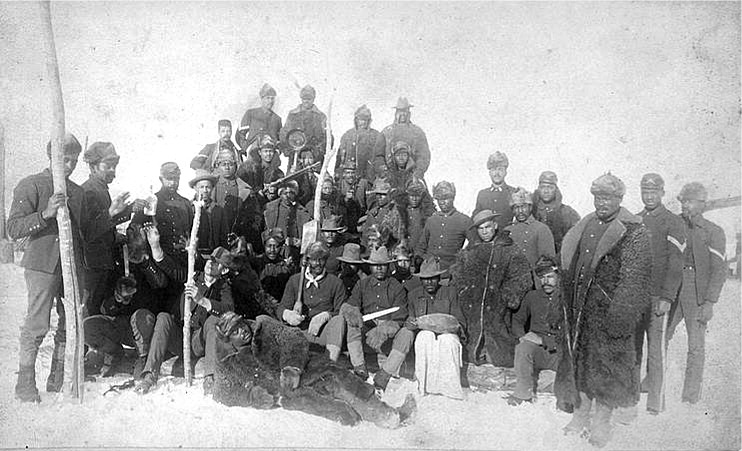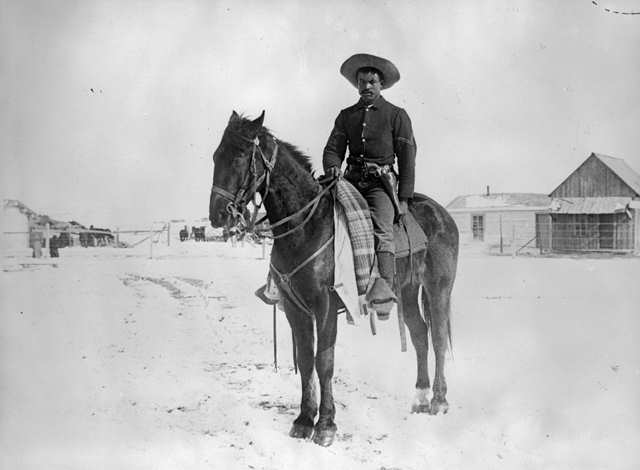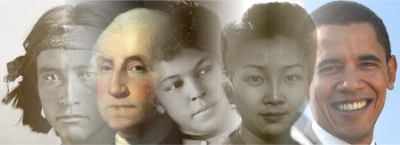
National Archives |
African American men, and their families, came west after the Civil War as members of the 9th and 10th Cavalry and the 38th, 39th, 40th, and 41st Infantry Regiments, (later the four infantry regiments merged and became the 24th and 25th Infantries.) The Buffalo Soldiers, as they came to be called, were among the most famous African Americans in Western history. They guarded settlers travelling west as well as railroad crews and cattle.
These soldiers are guarding a stage in 1869, just four years after the Civil War ended. |
From 1866 through the 1890s Buffalo Soldiers were stationed in the Southwest and on the Great Plains where they fought in the protracted Indian Wars. Some scholars estimate that 20 percent of all U.S. Cavalry soldiers who fought in the western Indian Wars was black. African Americans fought in a total of 177 engagements throughout the region. Thirteen enlisted men and six officers won Medals of Honor for their service.
|

Buffalo soldiers of the 25th Infantry, some wearing buffalo robes, Ft. Keogh, Montana, 1890. Photo by Chr. Barthelmess. Gladstone Collection, Library of Congress
|
 Western History/Genealogy Dept., Denver Public Library, neg #: X-31308 Western History/Genealogy Dept., Denver Public Library, neg #: X-31308
|
Corporal C. G. Morledge was a member of the 9th Cavalry. This picture was taken on the (Lakota) Pine Ridge Agency in South Dakota, probably in March 1891, three months after the Massacre at Wounded Knee.
Of course, the story is not nearly as simple as that. There is a lot more... NEXT
|
|

